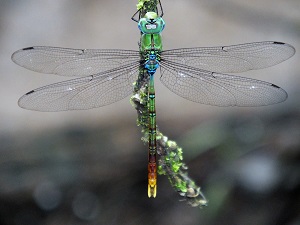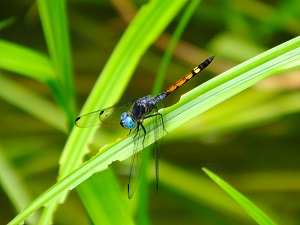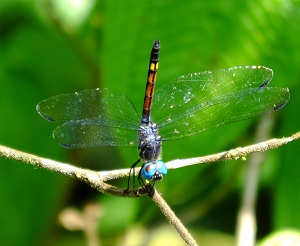Dragonflies reveal clues about efficacy of forest remediation efforts
Furman University’s Wade Worthen says ecosystems are a lot like any complex machine.
Take a car, for example. “You pop the hood and start pulling out plugs and belts and cables, and your car is probably not going to work,” said Worthen, the Rose J. Forgione Professor of Biology.
The same is true for delicate habitats and rainforests of Costa Rica, known for having one of the highest deforestation rates in Latin America in the 1970s and 1980s. Now, thanks to government controls and incentives to farmers to protect the land, Costa Rica has regained much of its forest that evaporated with spikes in crop and livestock agriculture, logging and soil erosion.
Still, according to the Brazilian Journal of Nature Conservation, the forests of Mesoamerica are one of the most endangered ecosystems in the tropics due to elevated rates of forest loss and fragmentation. Occupying only .1% of the world’s land mass, Mesoamerica lays claim to 7 to 10% of all the planet’s known life forms, making it a particularly significant area to watch, preserve and research.

Gold-tipped darner, Gynacantha tibiata / Wade Worthen
Through a recently awarded Fulbright Scholar grant, Worthen will study the impact of habitat attrition and attempts at environmental restoration when he embarks on a six-month dragonfly field study in the Mesoamerican Biological Corridor, the land bridge connecting North America and South America. His research builds on a chain of dragonfly research he’s conducted for over 20 years on the lithe, yet predatory, odonate.
Worthen will collaborate with a faculty member at the National University of Costa Rica to study dragonflies that inhabit forests and streams of different sizes in the MBC where efforts have been underway since 1997 to connect isolated national parks with forested land. By doing so, governments and nonprofit organizations hope to encourage species migration between the islands of habitat and increase populations in the biodiversity hotspot.

Immature male Black dasher, Micrathyria atra / Wade Worthen
“One of the major effects we’ve had on the natural landscape is not just cutting forests down into smaller blocks of remaining land. But we also chop them up into little islands of vegetation that are isolated from other blocks of forest,” Worthen explained. “A small habitat doesn’t produce as much food as a larger one and can’t support populations that are as large as those that live on more expansive habitats. So, what’s likely to happen is that these small populations will bounce into extinction.”
Beginning in January 2023, Worthen will study dragonfly populations in the large, forested blocks found in national parks and in the connecting terrain between forested blocks. Worthen will look at adult dragonfly populations, while his counterpart will examine dragonflies in their larval stages.
Together, the researchers intend to gain a clearer picture of what happens to dragonflies whose homes have undergone cycles of deforestation and reforestation.

Immature Black dasher, Micrathyria atra, with abdomen positioned upward to reduce heat gain / Wade Worthen.
“As a consequence of climate change and land conversion, we are changing the environment and also reducing the places where other species can live. The Earth is the way it is because of this life on the planet. There’s no other planet in the solar system that has oxygen in the atmosphere. That’s all put there by plants – they clean our water. They produce and fertilize our soils. So this diversity in the natural world is pretty critical to how it functions.
“Ecologists are concerned that as we lose the parts of the vitally important ecosystems, the ecosystems aren’t going to work like they have in a manner that has supported human existence. So understanding what maintains diversity is important if we hope to restore it.
“My project relates to that. How does the size of a natural area relate to the diversity within it, and what happens when we cut down a forest, then allow things to grow back? Do we get a forest that is similar enough to support the organisms that lived in the first one? In a small way, my study will see if the restoration plan through the Mesoamerican Biological Corridor Project is having a positive impact on one group of organisms,” Worthen said.